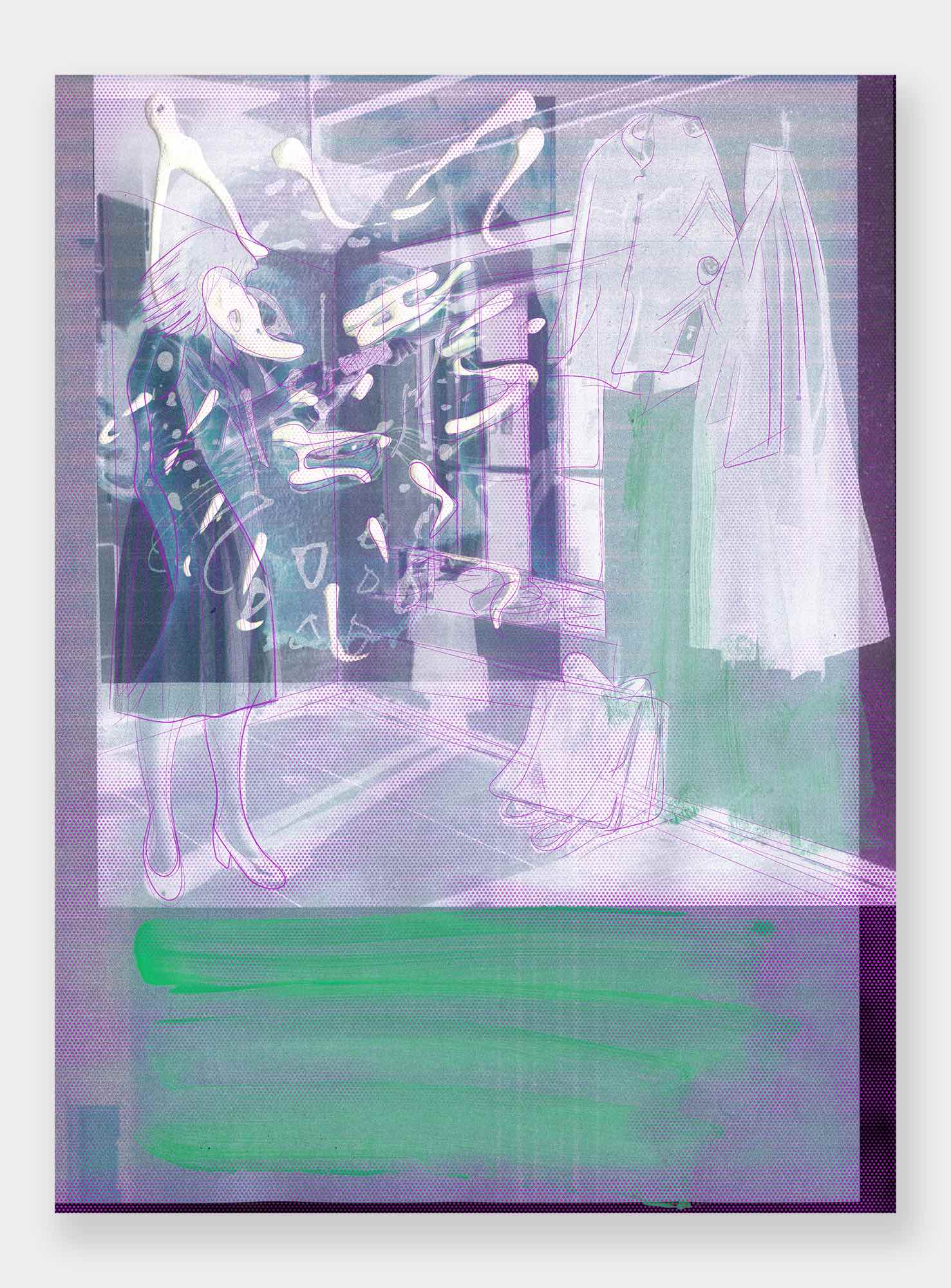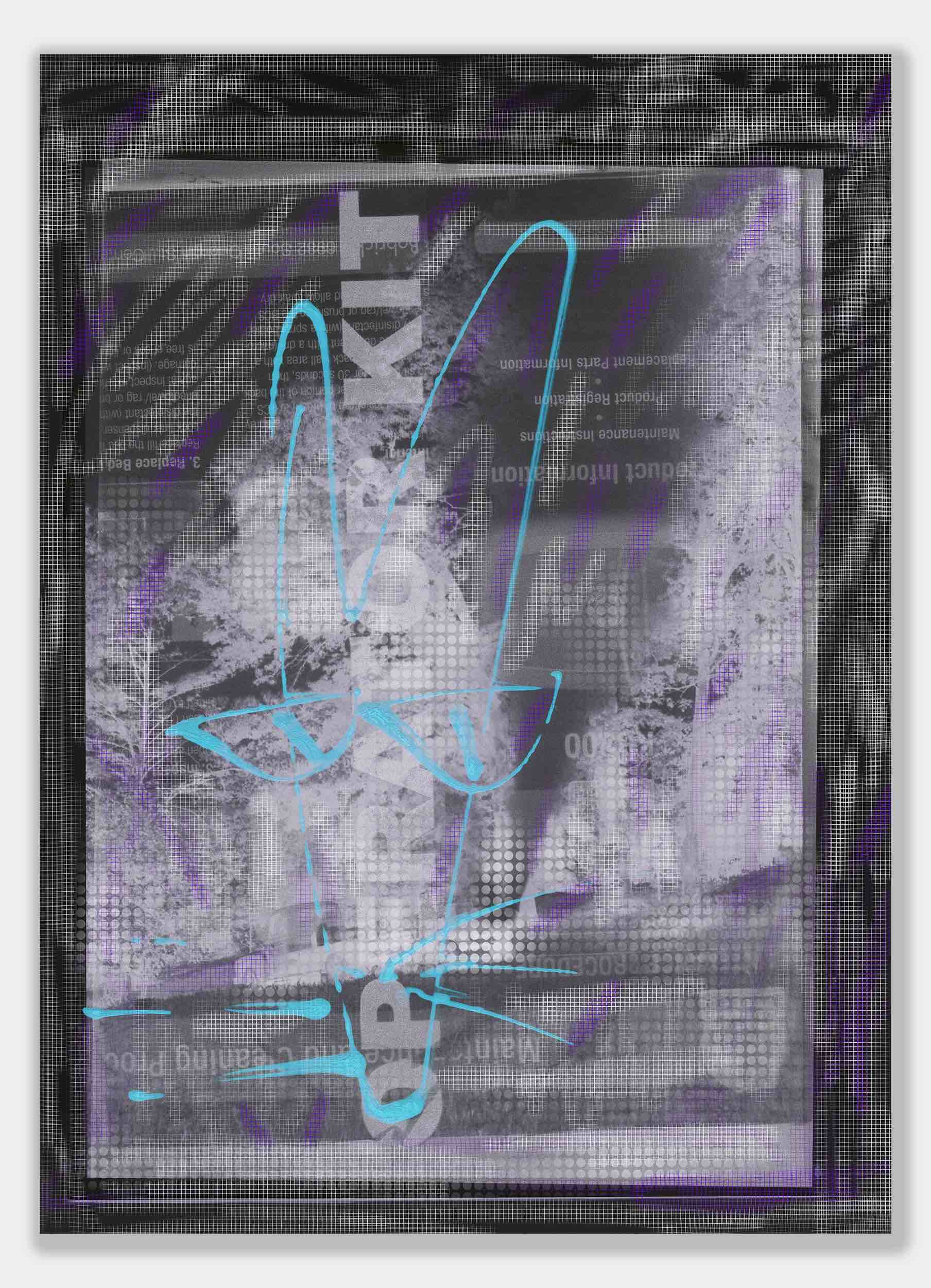 Interfaces of Techno-animism, 2024. Installation view, SPACE Gallery, PITTSBURGH CULTURAL TRUST, 2024
Interfaces of Techno-animism, 2024. Installation view, SPACE Gallery, PITTSBURGH CULTURAL TRUST, 2024This project explores the intersection of technology, gender, and animism, focusing on how East Asian cyber femininity is constructed and deconstructed through digital culture and artistic intervention. Taking inspiration from two contrasting yet interrelated figures—Paprika, the dream-navigating protagonist of Satoshi Kon’s Paprika (2006), and 2yn, a YouTuber known for her video What I Eat in a Day as a Professional Minecraft Player—the project examines how speculative identities blur the lines between the virtual and the real, the machinic and the mythological.
Both figures embody a cybernetic femininity shaped through platforms, games, and digital dreamscapes, offering images of East Asian women as both technologically empowered and subtly constrained. Through them, the project navigates the aesthetics of possibility that digital culture once promised, while also highlighting the cracks in that promise—how agency, identity, and representation are continually reabsorbed into gendered and racialized infrastructures of visibility and labor.
The project becomes a meditation on the collapse of techno-feminist dreams. The digital frontier, once envisioned as a space of liberation, now appears riddled with asymmetries: algorithmic biases, commodified subjectivities, and the persistent automation of intimacy. What was once a dream of cybernetic emancipation has, in many ways, been reterritorialized into a mirror of older hierarchies.
The work draws on Margaret Rhee’s Finding My Robot to unpack how robots and automation have historically served as gendered and racialized constructs. Asian women, in particular, have been positioned at the nexus of migration labor and technological embodiment, often imagined as compliant, efficient, or interchangeable. The robot thus becomes not only a technical object but a symbolic one—loaded with fantasies of control, eroticism, and invisibility. Rather than being neutral, technology emerges here as a site of both structural violence and subversive potential.
Both figures embody a cybernetic femininity shaped through platforms, games, and digital dreamscapes, offering images of East Asian women as both technologically empowered and subtly constrained. Through them, the project navigates the aesthetics of possibility that digital culture once promised, while also highlighting the cracks in that promise—how agency, identity, and representation are continually reabsorbed into gendered and racialized infrastructures of visibility and labor.
The project becomes a meditation on the collapse of techno-feminist dreams. The digital frontier, once envisioned as a space of liberation, now appears riddled with asymmetries: algorithmic biases, commodified subjectivities, and the persistent automation of intimacy. What was once a dream of cybernetic emancipation has, in many ways, been reterritorialized into a mirror of older hierarchies.
The work draws on Margaret Rhee’s Finding My Robot to unpack how robots and automation have historically served as gendered and racialized constructs. Asian women, in particular, have been positioned at the nexus of migration labor and technological embodiment, often imagined as compliant, efficient, or interchangeable. The robot thus becomes not only a technical object but a symbolic one—loaded with fantasies of control, eroticism, and invisibility. Rather than being neutral, technology emerges here as a site of both structural violence and subversive potential.

Video from: Paprika (Japanese: パプリカ, Hepburn: Papurika) is a 2006 Japanese adult animated surrealistic science fantasy psychological thriller film directed by Satoshi Kon,

Video from: 2yn on Youtube @2ynthetic 86k subscribers
What I eat in a day as a prodessional minecraft player

Referencing 19th-century editorial cartoons depicting Chinese automatons, Nam June Paik’s robotic art from the 1960s, and contemporary AI developments, the project reveals how Asian identity has been continually encoded into machines—flattened, mythologized, or aestheticized within circuits of techno-orientalism. Yet it also recognizes how Asian artists have reclaimed robotics to question and redefine the politics of identity and creative agency. These gestures mark an effort not to revive utopia, but to confront its failure—to expose its infrastructures and rewire its symbolic codes.
In this landscape of broken visions, Cheng Tingting’s work reactivates animism—not as nostalgic return, but as speculative methodology. By drawing lines between ancient Chinese cosmologies (where animals, spirits, and objects were seen as co-agents) and the affective logics of contemporary AI and gaming culture, the work proposes a post-human worldview where agency is distributed, ambiguous, and unstable. The animistic impulse becomes a means of resisting techno-rationalist closure, reintroducing soul and unpredictability into systems of control.
Inspired by Donna Haraway, the project challenges binary logics—human/machine, East/West, natural/constructed—and instead operates in the thick terrain of entanglement. Here, the “cybernetic body” is not perfected, but haunted: fragmented, eroticized, and exposed. The screen is no longer a portal to a better future, but a threshold between self and simulation, between promise and breakdown.
Ultimately, this work does not merely critique the conditions of cyber-femininity or technological racialization—it examines the ruins of their idealizations. It explores what happens when the myth of digital liberation erodes, when embodiment glitches, when utopia lingers only in spectral form. Amid synthetic skins and algorithmic rituals, it asks: What now breathes in the wreckage of what we once believed would save

